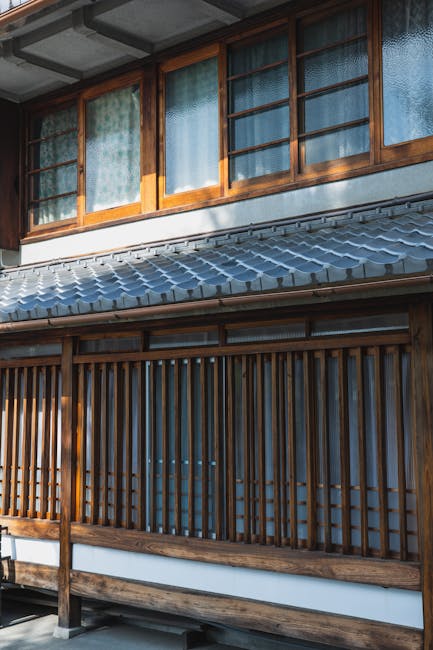あいうえおのうた & More: A 15-Minute Japanese Nursery Rhyme Journey for the Soul

あいうえおのうた & More: A 15-Minute Japanese Nursery Rhyme Journey for the Soul
Konnichiwa, design enthusiasts and lovers of all things beautiful! Today, let's embark on a delightful auditory journey into the world of Japanese doyo (童謡) – children's songs. I've curated a 15-minute medley featuring the beloved "あいうえおのうた" (Aiueo no Uta) and other enchanting tunes, perfect for a little "uta no oyatsu" (歌のおやつ) – a song snack! Imagine a moment of serenity, a mini-escape filled with cheerful melodies and simple, yet profound, lyrics. These songs are more than just entertainment; they're a window into Japanese culture, language, and the very heart of childhood.
Why am I, a design enthusiast, so captivated by these seemingly simple songs? Because I believe that beauty exists in the most unexpected places. Just as a meticulously crafted ceramic teacup elevates the ritual of tea drinking, these nursery rhymes offer a moment of pure, unadulterated joy that enhances our everyday living. They're like miniature design masterpieces, carefully constructed to be both functional (teaching children) and aesthetically pleasing (with their melodic and lyrical beauty).
The Allure of "あいうえおのうた" (Aiueo no Uta)

Let's start with the star of our show, "あいうえおのうた." This song is fundamental to Japanese literacy. It playfully teaches the Japanese syllabary, starting with the vowels "あいうえお" (a i u e o). But it's more than just a learning tool; it's incredibly catchy and has a heartwarming simplicity that resonates with people of all ages. Think of it as the Japanese equivalent of the "ABC song," but with a unique Japanese flavor. The beauty of "あいうえおのうた" lies in its ability to make learning fun and accessible.
I appreciate how it mirrors the Japanese design philosophy of wabi-sabi – finding beauty in imperfection and simplicity. The song doesn't need elaborate arrangements or complex lyrics; its effectiveness lies in its straightforwardness and clear message. It's a perfect example of functional beauty, where the purpose (teaching the alphabet) and the aesthetic (the charming melody) are perfectly intertwined.
A 15-Minute Do-yo Medley: More Than Just Entertainment

Beyond "あいうえおのうた," the medley I've curated includes a selection of other classic Japanese nursery rhymes. These songs are like little time capsules, preserving the cultural heritage and values of Japan. They often depict nature, family, and everyday life, offering glimpses into a world that is both familiar and uniquely Japanese. Let's explore why these songs are so special:
Why Choose a Nursery Rhyme Medley?
A medley offers a wonderful opportunity to experience a variety of songs in a short period. It's like a tasting menu of Japanese childhood, allowing you to sample different flavors and melodies. It's perfect for busy schedules and provides a quick and effective way to immerse yourself in the beauty of Japanese children's music.
Benefits of Listening to Japanese Nursery Rhymes:
- Language Learning: Even if you don't understand Japanese, listening to the songs can help you become familiar with the sounds and rhythms of the language. It's a fun and engaging way to improve your listening comprehension.
- Cultural Immersion: These songs offer insights into Japanese culture, traditions, and values. They provide a glimpse into the world through the eyes of a Japanese child.
- Mood Enhancement: The cheerful melodies and simple lyrics can lift your spirits and create a sense of calm and well-being. They're like a mini-meditation session for the soul.
- Nostalgia and Connection: For those with Japanese heritage, these songs can evoke feelings of nostalgia and connection to their roots. They're a reminder of childhood memories and family traditions.
- Stress Relief: The repetitive nature of the songs can be soothing and relaxing, helping to reduce stress and anxiety.
Key Elements of Japanese Do-yo Design

What makes these nursery rhymes so uniquely Japanese? I believe it boils down to a few key design principles, similar to those found in Japanese architecture and art:
- Simplicity: The melodies are typically simple and easy to remember, focusing on clarity and directness. This minimalist approach reflects the Japanese aesthetic of reducing complexity to its essence.
- Nature-Inspired Imagery: Many songs feature imagery drawn from nature, such as mountains, rivers, flowers, and animals. This reflects the Japanese reverence for the natural world and the desire to live in harmony with it.
- Focus on Positive Values: The lyrics often promote positive values such as kindness, respect, perseverance, and gratitude. They aim to instill these values in children from a young age.
- Repetition and Rhythm: Repetition and rhythmic patterns are used to make the songs easy to learn and remember, as well as to create a sense of comfort and familiarity.
- Emotional Resonance: Despite their simplicity, these songs often evoke deep emotions and create a sense of connection to the listener. They have a unique ability to touch the heart.
Crafting Your Own "Uta no Oyatsu" Experience

How can you incorporate this 15-minute medley into your daily life? Here are a few suggestions:
- Morning Ritual: Start your day with a dose of Japanese cheer. Listening to the medley while you get ready can set a positive tone for the rest of the day.
- Afternoon Pick-Me-Up: Feeling tired or stressed in the afternoon? Take a break and listen to the medley. It's a refreshing and invigorating way to recharge your batteries.
- Evening Relaxation: Wind down after a long day by listening to the medley before bed. The soothing melodies can help you relax and prepare for a good night's sleep.
- Creative Inspiration: Use the songs as inspiration for your own creative projects. The melodies and lyrics can spark new ideas and perspectives.
- Family Bonding: Share the songs with your family and friends. It's a fun and engaging way to connect with loved ones and introduce them to Japanese culture.
Where to Find Your Japanese Nursery Rhyme Fix

Thankfully, accessing these delightful tunes is easier than ever! Here are a few options:
- YouTube: YouTube is a treasure trove of Japanese nursery rhymes. Search for "あいうえおのうた" (Aiueo no Uta) or "童謡メドレー" (Doyo Medley) to find a wide variety of recordings.
- Spotify and Apple Music: Many Japanese artists and labels have made their nursery rhymes available on streaming services. Search for "Japanese nursery rhymes" or specific song titles to find them.
- Japanese Language Learning Apps: Some language learning apps include nursery rhymes as part of their curriculum. This is a great way to learn Japanese while enjoying the music.
- Online Radio Stations: Some online radio stations specialize in Japanese children's music. Tune in to these stations to discover new and interesting songs.
- Physical CDs and DVDs: If you prefer a more tangible experience, you can purchase CDs and DVDs of Japanese nursery rhymes online or at Japanese bookstores.
Beyond the Music: Embracing the Japanese Aesthetic

For me, enjoying these nursery rhymes is part of a larger appreciation for Japanese culture and aesthetics. It's about finding beauty in simplicity, appreciating the natural world, and valuing kindness and respect. Consider incorporating other elements of Japanese design into your life:
- Minimalist Decor: Embrace a minimalist approach to your home decor, focusing on essential items and clean lines.
- Natural Materials: Incorporate natural materials such as wood, bamboo, and paper into your home.
- Japanese Art: Display Japanese art such as calligraphy, woodblock prints, and ceramics.
- Tea Ceremony: Learn about the Japanese tea ceremony and incorporate elements of it into your own tea-drinking ritual.
- Gardening: Create a Japanese-style garden with elements such as rocks, gravel, and carefully pruned plants.
The Enduring Appeal of Japanese Do-yo

Japanese doyo are more than just children's songs; they are a cultural treasure. Their enduring appeal lies in their simplicity, beauty, and ability to connect us to our shared humanity. They remind us of the importance of kindness, respect, and appreciation for the natural world. They offer a moment of peace and joy in our busy lives. They are, in essence, a small but powerful expression of the Japanese aesthetic – a testament to the beauty that can be found in the simplest of things. So, take a moment, press play on that medley, and let the enchanting melodies of "あいうえおのうた" and its companions transport you to a world of childlike wonder and serene beauty. It's a design experience for the ears, and a balm for the soul.
Sayonara for now, and may your days be filled with beauty and harmony!
Post a Comment